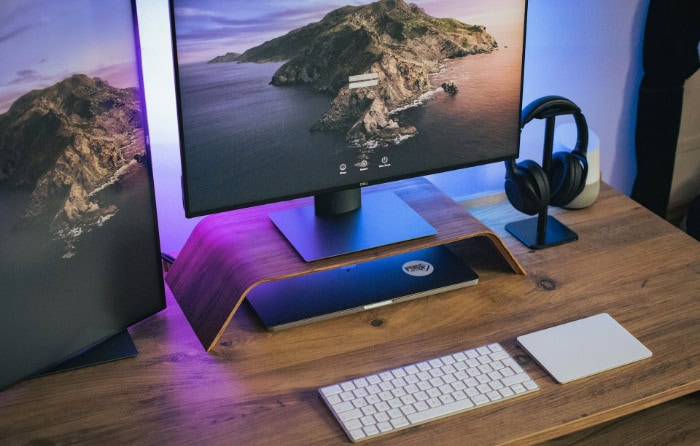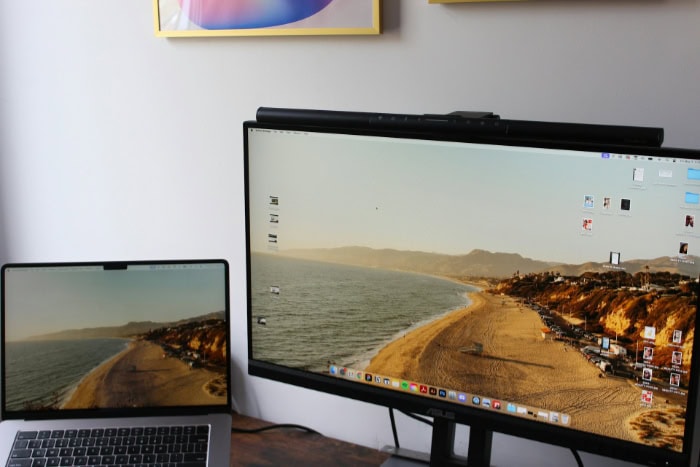OLED vs. IPS: Which Screen Type Suits You Better?

Display technology has a direct impact on how we perceive content, shaping everything from fine details to vivid colors. Among the most prominent contenders are OLED and IPS, each catering to different preferences and priorities.
OLED panels are praised for their striking contrasts and rich visuals, while IPS displays are valued for their color accuracy and durability. Choosing between the two depends on factors like gaming performance, creative workflows, or everyday usability.
Core Technical Differences
Display technologies play a significant role in how we experience digital content, and OLED and IPS operate on fundamentally different principles. These differences shape their performance, visual quality, and overall strengths.
Self-Emissive vs. Backlit Technology
One of the most notable distinctions is how these technologies create images. OLED, which stands for Organic Light-Emitting Diode, is a self-emissive technology.
This means each individual pixel generates its own light, allowing precise control at the pixel level. When a pixel is turned off, it produces absolute black, contributing to its remarkable visual depth. This self-emissive design eliminates the need for a backlight, making OLED panels incredibly thin and flexible for modern devices.
IPS, or In-Plane Switching, is a form of LCD technology that relies on a backlight to illuminate the entire display. Unlike OLED, IPS pixels themselves do not emit light; instead, they control the intensity of the backlight passing through liquid crystals to produce the desired image.
While this method ensures consistent brightness across the screen, it lacks the fine control of individual pixels, which impacts contrast and black levels.
Contrast Ratio
The difference in how OLED and IPS generate light leads to a dramatic contrast in their ability to display dark and bright areas simultaneously. OLED displays offer infinite contrast ratios because they can completely turn off individual pixels to produce true blacks.
This capability allows for unmatched visual depth and a more immersive viewing experience, particularly when watching content with high dynamic range (HDR).
IPS panels, on the other hand, are limited by their reliance on a backlight. Even when displaying dark scenes, the backlight cannot be entirely turned off, meaning blacks may appear more like dark gray.
While modern IPS displays have improved their contrast through techniques like local dimming, they still cannot match the precision of OLED in presenting the stark differences between light and dark elements on the screen.
Response Time
Response time measures how quickly pixels can change from one state to another, such as transitioning between colors. OLED excels in this area, offering near-instantaneous response times because pixels are individually controlled and can be adjusted immediately.
This attribute makes OLED displays ideal for fast-paced content like video games or action-packed movies, where motion clarity significantly enhances the experience.
In comparison, IPS panels have slower response times due to the mechanics of liquid crystal adjustment. While modern IPS displays have improved over time, they may still struggle with motion blur during rapid transitions.
For casual viewing or less demanding tasks, this difference may not be noticeable, but competitive gamers often prefer OLED for its superior performance in this aspect.
Brightness
Brightness is one area where IPS has a clear advantage over OLED. IPS panels are capable of achieving higher sustained brightness levels because their performance is not limited by the organic materials used in OLED.
This makes them particularly effective in brightly lit environments, such as offices or spaces with large windows, where higher brightness ensures the display remains visible.
OLED panels, while capable of delivering intense peak brightness during HDR content, can struggle with sustained brightness levels over prolonged use. This limitation is due to the organic compounds used in OLED, which can degrade with excessive heat.
Additionally, higher brightness levels in OLED may lead to increased power consumption. However, this does not detract from its ability to deliver stunning visuals in environments where extreme brightness is not required.
Performance by Use Case

When choosing between OLED and IPS displays, their performance often depends on how the screen will be used. From gaming to professional content creation and everyday activities, each display technology has strengths and limitations that influence the experience.
Gaming
Gaming places unique demands on display technology. Fast response times, high refresh rates, and visual immersion are essential for an enjoyable gaming experience.
OLED displays stand out for their motion clarity and HDR performance. The near-instantaneous response time of OLED ensures minimal motion blur, allowing fast-paced games to appear smooth and crisp.
In addition, OLED’s ability to achieve perfect blacks and vibrant colors adds depth and realism to HDR gaming, making in-game environments and lighting effects more immersive. However, OLED screens are not without drawbacks. The risk of burn-in, where static images or UI elements can leave permanent marks over time, may concern gamers who spend hours on games with fixed interfaces.
IPS panels, on the other hand, are highly reliable and versatile for gaming. While IPS response times are generally slower than OLED, advancements in technology have led to displays with low-latency performance.
IPS panels are capable of achieving extremely high refresh rates, with some models reaching up to 360Hz, making them ideal for competitive gaming where smooth performance and precision are critical. Their durability and resistance to burn-in also make them well-suited for long gaming sessions.
Although IPS cannot deliver the same level of contrast and HDR impact as OLED, its consistent color reproduction and reliable performance remain a popular choice for gamers seeking longevity and practicality.
Content Creation
Content creators often prioritize displays that excel in color accuracy and consistency. For professional workflows, precision in representing colors and uniform brightness across the screen are vital for editing photos, videos, and graphic designs.
IPS panels have long been favored in this domain due to their ability to deliver accurate and consistent colors across a wide viewing angle. This is crucial for professionals who need reliable performance when working on color-sensitive projects.
IPS screens also maintain uniform brightness levels, ensuring that no part of the image appears unevenly lit, which is essential for detailed editing.
On the other hand, OLED displays offer an unparalleled viewing experience with vivid saturation and deeper contrasts. These qualities can enhance how creative projects look, especially when reviewing HDR content or working on projects involving dark environments.
However, OLED’s intense vibrancy may not always represent colors with the same level of neutrality and accuracy required for professional workflows. Additionally, calibration for color accuracy on OLED screens can be more challenging, and their tendency toward uneven wear means they might not always be the best long-term solution for demanding professional use.
Everyday Use
For day-to-day activities such as streaming shows, web browsing, or working with documents, the choice between OLED and IPS often comes down to personal preference and daily habits. OLED panels excel in creating a cinematic experience for media consumption.
The perfect blacks, along with vibrant and rich colors, make movies and TV shows visually stunning. Furthermore, OLED technology reduces glare in dimly lit settings, providing a comfortable viewing experience without distracting reflections.
However, for users who frequently work with static content, such as spreadsheets or reading text-heavy webpages, OLED’s susceptibility to burn-in may be a consideration.
IPS panels are dependable and well-suited for general use. Their consistent brightness, wide viewing angles, and resistance to burn-in make them ideal for tasks like working on documents, browsing the web, or video conferencing.
While IPS screens might lack the dramatic visuals of OLED, they shine in reliability and performance for long hours of productivity or casual everyday use.
Practical Considerations

When comparing OLED and IPS displays, technical performance isn’t the only factor that comes into play. Practical elements such as durability, cost, power efficiency, and physical design significantly affect how these technologies fit into different lifestyles and preferences.
Durability
Durability is a significant point of difference between OLED and IPS technologies. OLED panels rely on organic materials to produce light, which means they are subject to gradual degradation over time.
This can lead to a reduction in brightness and noticeable changes in color balance as the display ages. Additionally, OLED screens are somewhat prone to burn-in, where static images or interface elements can leave a lasting imprint if displayed for extended periods.
While modern OLED designs include features to minimize these risks, the potential for degradation remains a factor users should keep in mind.
IPS panels offer better long-term stability in comparison. Since they use inorganic crystals and rely on a consistent backlight, they are less susceptible to wear over time.
IPS displays do not suffer from burn-in, making them particularly well-suited for tasks involving static images, such as productivity work or graphic design. For users seeking displays that can maintain consistent performance over years of use, IPS technology provides a reliable and durable option.
Cost
Pricing also sets OLED and IPS panels apart, with OLED generally commanding a premium in the market. This is largely due to the complexities of manufacturing OLED displays and their widespread appeal for high-end devices.
The cost difference can be especially pronounced in larger screens, such as televisions and monitors, where OLED panels are often significantly more expensive than comparable IPS options. For those on a tight budget, this price gap may make OLED a less accessible choice.
IPS displays are typically more affordable, offering good performance at a lower price point. This makes IPS technology an appealing choice for those who want a balance between quality and cost.
While high-end IPS panels with advanced features can still be expensive, they are generally more economical than OLED displays of similar sizes and specifications. The cost advantage often makes IPS the preferred choice for educational, professional, or general-purpose applications.
Power Efficiency
Energy usage is another factor that differentiates these two technologies, particularly for devices like laptops and smartphones where battery life is a priority. OLED panels excel at variable power efficiency, as each pixel only consumes energy when it is actively displaying light.
Darker images or interfaces use less power on OLED displays, which can prolong battery life in scenarios where black or darker tones dominate the screen.
In contrast, IPS relies on a fixed backlight that remains illuminated regardless of the image being displayed. This means power consumption stays relatively consistent, whether the content on the screen is bright or dark.
While this simplifies energy usage patterns, it can result in higher overall power consumption compared to OLED, especially when dark content is frequently shown. For devices that prioritize efficiency in dynamic lighting scenarios, OLED may have an edge, but IPS remains a solid choice for stable energy use requirements.
Form Factor
The engineering differences between OLED and IPS also influence the physical form of the display, which can be important for certain applications. OLED panels are incredibly thin because they do not require a separate backlight.
This ultrathin design has allowed manufacturers to create lightweight, flexible panels ideal for modern, sleek devices such as smartphones, high-end televisions, and even rollable screens. OLED’s compact form factor is a defining feature, and its flexibility opens avenues for innovative designs.
IPS panels are generally bulkier due to the inclusion of a backlight and additional layers required to direct and filter light. While this results in a thicker display, it does not compromise viewing quality or durability.
However, the higher space and weight requirements of IPS may limit its use in ultra-slim designs or devices where compactness is essential. Despite this, IPS technology is still widely used in devices where portability and minimal thickness are less critical, such as desktop monitors and budget-friendly laptops.
User Experience and Preferences

The way a display feels and performs during everyday use is just as important as its technical specifications. Factors such as visual appeal, comfort during extended viewing, and how well a display handles different lighting conditions significantly influence user preferences.
Visual Appeal
OLED displays are renowned for their vibrant and striking visuals, often described as having a “pop” that draws viewers in. The self-emissive nature of OLED allows for perfect blacks, stunning contrast, and rich, saturated colors that make images appear lifelike and immersive.
This creates a dramatic effect, particularly in HDR content, where OLED excels at showcasing subtle lighting details and intense highlights. For users who value a cinematic or visually impactful experience, OLED displays provide a level of dynamic vibrancy that few technologies can rival.
IPS panels, on the other hand, lean toward more natural tones and balanced color reproduction. While IPS cannot achieve the same level of contrast as OLED, its colors are often more neutral and accurate, making it a popular choice for tasks like photo editing, graphic design, or any scenario requiring true-to-life color fidelity.
IPS displays avoid the over-saturation that some OLED screens exhibit, offering a more realistic and consistent viewing experience. This makes them ideal for users who prioritize accurate and dependable visuals over dramatic effects.
Eye Comfort
Long viewing sessions can lead to eye strain, making comfort an essential consideration when choosing a display. OLED screens are generally easier on the eyes, as they emit lower levels of blue light compared to traditional backlit technologies.
Many OLED panels are designed to minimize blue light while still delivering excellent image quality, which can make them more comfortable to use, particularly in dim environments or later in the evening.
In contrast, IPS panels rely on a backlight to illuminate the screen, and this can introduce challenges for eye comfort. The uniform brightness of the backlight, combined with higher blue light emission, may cause strain during extended use, especially in darker settings.
Some IPS screens come with anti-blue-light modes to address this issue, but users may still find OLED’s intrinsic blue-light reduction more soothing, especially for nighttime use.
Ambient Light Performance
The way a display performs in various lighting conditions can significantly impact usability. IPS panels often excel in brightly lit environments due to their anti-glare coatings, which help reduce reflections and maintain visibility.
This makes them well-suited for use in offices, classrooms, or rooms with large windows, where controlling ambient light is not always possible. The consistent brightness of IPS displays further enhances their practicality in these scenarios, ensuring the screen remains clear and legible.
OLED screens, while visually stunning in controlled lighting, can struggle in environments with strong ambient light. Their reflective surfaces may result in distracting glare, which can diminish the viewing experience in bright spaces.
For optimal performance, OLED displays typically require dimmer surroundings. However, their ability to maintain excellent contrast and color vibrancy can still make them an attractive option for users who prioritize visual quality over practicality in well-lit settings.
Conclusion
OLED and IPS displays each bring unique strengths to the table, making them suited to different needs and preferences. OLED stands out with its unmatched contrast, vibrant visuals, and sleek design, offering an immersive experience for media consumption, gaming, and innovative devices.
On the other hand, IPS delivers reliable performance with excellent color accuracy, high brightness, and durability, proving its value for content creation, productivity, and bright environments.
Practical factors like cost, power efficiency, and long-term usability also play a significant role in distinguishing the two. Modern advancements have closed many gaps between these technologies, with OLED addressing durability concerns and IPS pushing its contrast and motion performance further.
The choice often comes down to how these characteristics align with specific use cases and priorities. Whether it’s the cinematic impact of OLED or the dependable versatility of IPS, both technologies continue to enhance how we engage with the world through screens.



